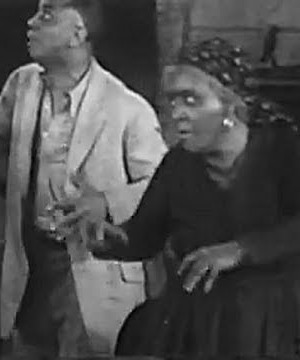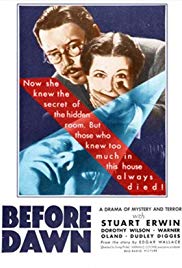
In Africa, three bored, wealthy wastrels, Helen Chalmers, Col. Leonard Crecy, and Norman Bellamy (Gertrude Michael, Paul Cavanagh and Berton Churchill) harangue their friend (Ray Milland) to come and play bridge with them, even though there’s a storm, the dam he’s responsible for could burst, and he’d have to fly his biplane to get there. But eventually he gives in and shows up for the card game. When he receives dire news from the dam, he takes off, but ends up dead. His insane brother swears revenge on the three, giving an exact date on when he will kill them. On that day, the three gather at a large, secluded house in California, along with Cavanaugh’s chauffer (Forester Harvey). They also hire a new butler, Skinner (Halliwell Hobbes), and welcome Helen’s kid sister (Arletta Duncan) and her brand new boyfriend (Robert Allen). Finally they are joined by the eccentric old woman from a mile or so down the road (Henrietta Crossman) and the young man who is a friend of her son’s (John Lodge). It soon becomes clear, in case it wasn’t already, that the killer is in the house.
I’ve pointed out that the Old Dark House films are the ancestors of Slashers. Menace shows you can have your children when you are young. It’s often categorized as an Old Dark House film, but it’s a Slasher, one of the earliest, coming four decades before the subgenre’s normally stated birthdate. We have our groups of dim characters, gathered together, with a knife-wielding maniac set to kill them. And the targets of his wrath aren’t randomly chosen, but people who bare partial responsibility for a death.
And as in so many Slashers, these are remarkably stupid people. The psycho told them he would kill them on a particular date. So they get together. Why? Since they had just been scattered over three continents, it would have been impossible for the threat to be carried out. They choose as their haven a house over a mile away from the nearest neighbor, and distant from a town. And they choose this day to hire a new butler (are they so degenerate that they couldn’t take care of themselves without a butler for a single day), as well as receiving a visit from a sister who brings a guy she’s only known for a few weeks, and let in the neighbor with a man she’s only known for a few days. Is this really the time to be having visitors? Either hire a team of 10 or 15 bodyguards, or keep out all strangers. And shouldn’t they have asked the doctors at the asylum just what the maniac looked like?
And once they know the killer is there, their stupidity rises a level. They separate over and over again. They do so for trivial matters, like wanting another cocktail and moving a body (shouldn’t they leave it until the police show up) and for important ones, like fixing the fuse. Sometimes they run off on their own. Sometimes this is an actual plan. The Colonel is the worse offender, telling the others to go off here and there. It’s dumb the first few times, but after that it’s just funny.
If you can get past how brain-dead these people are, you are left with a passable thriller. Somehow with them all in eveningwear it comes off as slightly less silly since this is a stiff-upper-lip crowd, and hey, didn’t rich people in the 1930s act like this? (The answer is no, but it feels like they might.) Menace builds up the appropriate level of tension, and is unusually graphic for 1934 as we get to see the dagger sliding into a victim (I did say this was a Slasher). The characters are at least identifiable, and the old lady is amusing. You also get a few minutes of a very young Ray Milland. I’d have felt gypped in 1934 paying full price for this, particularly as it’s 58 minutes long, but it isn’t bad to watch while curled up on the sofa.

 The newest, and much inferior version replaces a court scene with a swordfight, which would normally be a reasonable way of increasing the excitement. But it doesn’t work, in part because the fight is just standard violence where the court scene holds a much more poetic revenge.
The newest, and much inferior version replaces a court scene with a swordfight, which would normally be a reasonable way of increasing the excitement. But it doesn’t work, in part because the fight is just standard violence where the court scene holds a much more poetic revenge.







